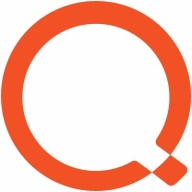

Oracle Coherence and Foglight for Databases are key players in data management and performance monitoring. Oracle Coherence excels with its caching capabilities, while Foglight offers superior insights through comprehensive monitoring tools.
Features: Oracle Coherence delivers high-performance distributed caching, real-time data processing, and grid computing support. In contrast, Foglight for Databases excels with robust monitoring, diagnostic, and optimization features specific to various database environments.
Room for Improvement: Oracle Coherence could benefit from simplified deployment options and enhanced integration capabilities. Additionally, more detailed documentation for users with varying expertise levels would be helpful. Foglight for Databases could improve by enhancing its user interface for increased intuitiveness, providing more advanced predictive analytics, and offering more flexible pricing models.
Ease of Deployment and Customer Service: Foglight for Databases is recognized for its straightforward implementation and extensive support resources catering to diverse technical expertise. Oracle Coherence requires more intricate setup, relying on specialized Oracle support services.
Pricing and ROI: Oracle Coherence offers cost-effective scalability with significant ROI from performance efficiencies. Foglight for Databases, while potentially carrying higher upfront costs, delivers substantial ROI by improving database management and operational visibility.


Foglight for Databases offers comprehensive monitoring with real-time activity screens and adaptive baselines. It provides a 360-degree overview and efficient UI, requiring no custom scripts, aiding in proactive issue identification and resolution before impacting end users.
Foglight for Databases is a robust tool for monitoring across multiple platforms, including SQL and Oracle. It provides features like the "Morning Coffee" dashboard and SQL Performance Investigator, enabling effective workload analysis and historical investigation. Despite some challenges with sluggish performance on large data volumes and excessive non-critical alerts, it remains a preferred choice for its ability to support proactive management and resource planning. Users appreciate its centralized view of extensive database systems, enabling swift detection and resolution of issues in real-time.
What are the key features?Foglight is extensively implemented in industries managing extensive database systems, handling numerous servers to ensure availability and performance. It assists businesses in resolving blocking and locking deadlocks, crucial for maintaining smooth operations in production and development environments.
Oracle Coherence is an in-memory data grid solution that enables organizations to predictably scale mission-critical applications by providing fast access to frequently used data. As data volumes and customer expectations increase, driven by the “internet of things”, social, mobile, cloud and always-connected devices, so does the need to handle more data in real-time, offload over-burdened shared data services and provide availability guarantees.
Oracle Coherence comes with a rich set of processing and event capabilities so applications can scale processing with increased data volumes. By automatically and dynamically partitioning data, Oracle Coherence ensures continuous data availability and transactional integrity, even in the event of a server or site failure.
Oracle Coherence provides organizations with a robust scale-out data abstraction layer that brokers the supply and demand of data between applications and data sources. This cost-effectively offloads shared data services such as databases, mainframes, and partner services.
For more information on Oracle Coherence, visit Oracle.com
We monitor all Database Development and Management reviews to prevent fraudulent reviews and keep review quality high. We do not post reviews by company employees or direct competitors. We validate each review for authenticity via cross-reference with LinkedIn, and personal follow-up with the reviewer when necessary.